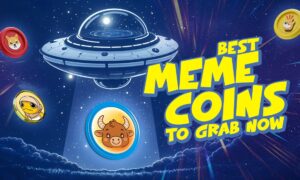Introduction:
In the dynamic world of cryptocurrency, a revolutionary trend has emerged at the intersection of technology and creativity—Non-Fungible Tokens (NFTs). This innovative concept has paved the way for a creative revolution, transforming how we perceive, share, and own digital assets. In this comprehensive exploration, we delve into the synergy between NFTs and cryptocurrency, examining the impact on artists, collectors, and the broader cultural landscape.
Understanding NFTs:
Non-Fungible Tokens, or NFTs, are unique digital assets verified using blockchain technology. Unlike traditional cryptocurrencies such as Bitcoin or Ethereum, NFTs are indivisible and possess distinct attributes that set them apart. Each NFT is one-of-a-kind, representing ownership of a specific digital file, be it an image, video, audio, or any other form of digital content.
The Role of Cryptocurrency:
Cryptocurrencies, particularly Ethereum, play a pivotal role in the NFT ecosystem. NFTs are typically minted and traded on blockchain networks that support smart contracts, with Ethereum being the most widely used platform. The use of cryptocurrency ensures transparency, security, and decentralization in the creation and exchange of NFTs.
The Creative Revolution:
Empowering Digital Artists:
NFTs have become a game-changer for digital artists, providing them with a new avenue to monetize their work. Traditionally, digital art faced challenges of replication and unauthorized distribution. NFTs solve this problem by enabling artists to tokenize their creations, establishing true ownership and authenticity.
Ownership and Scarcity:
The concept of ownership takes on a new dimension with NFTs. Through blockchain technology, artists can embed scarcity into their digital creations, mimicking the scarcity associated with physical art. This digital scarcity enhances the perceived value of NFTs, creating a sense of exclusivity coveted by collectors.
New Revenue Streams:
For artists, NFTs offer diversified revenue streams. Beyond traditional sales, artists can earn royalties each time their NFT changes hands in the secondary market. This novel approach to compensation empowers creators and establishes a more sustainable model for the creative industry.
Engaging Collectors:
Collectors, too, benefit from the NFT revolution. Owning a unique, verifiable digital asset becomes a form of self-expression and a status symbol within the digital realm. The ability to support favorite artists directly and engage in a global community of collectors adds a social dimension to NFT ownership.
Market Dynamics:
NFT Marketplaces:
NFT marketplaces, such as OpenSea, Rarible, and Mintable, serve as platforms for artists to mint, list, and sell their NFTs. These decentralized marketplaces have democratized the art world, allowing emerging artists to showcase their work alongside established creators.
Crypto Collectibles:
In addition to digital art, NFTs have extended into the realm of crypto collectibles—unique, tradable tokens representing characters or items in virtual games or platforms. This fusion of blockchain technology and gaming culture has created a vibrant market for rare and valuable virtual assets.
Challenges and Controversies:
Environmental Concerns:
The energy consumption associated with certain blockchain networks, particularly Ethereum, has sparked environmental concerns. The carbon footprint of NFTs has raised questions about the sustainability of this creative revolution. Efforts are underway to explore more eco-friendly alternatives.
Intellectual Property Issues:
The intersection of NFTs and copyright law has led to debates surrounding intellectual property. Issues such as the ownership of digital content, copyright infringement, and the rights of original creators in the ever-evolving digital landscape present legal challenges that need careful consideration.
The Future of NFTs and Cryptocurrency:
Technological Innovations:
The future of NFTs is poised for further technological innovations. The development of more energy-efficient blockchain networks and the integration of cutting-edge technologies like augmented reality (AR) and virtual reality (VR) into NFT experiences are exciting prospects for the creative landscape.
Mainstream Integration:
As NFTs gain widespread recognition, their integration into mainstream culture is inevitable. From virtual real estate to digital fashion, the possibilities are vast. Brands, celebrities, and institutions are likely to explore NFTs as a means of engaging audiences and creating unique, digital experiences.
Educational Initiatives:
Addressing concerns and controversies surrounding NFTs requires education and awareness. Initiatives to educate artists, collectors, and the general public about the environmental impact, legal considerations, and ethical dimensions of NFTs are crucial for the sustainable growth of this creative revolution.
Conclusion:
The intersection of NFTs and cryptocurrency represents a groundbreaking chapter in the evolution of digital assets and creative expression. This symbiotic relationship has empowered artists, engaged collectors, and redefined how we perceive and value digital content. Despite challenges and controversies, the potential for positive change in the creative industry is undeniable. As NFTs continue to shape the cultural landscape, their impact extends beyond the digital realm, ushering in a new era where the boundaries between the physical and digital worlds blur, and creativity knows no bounds.



































